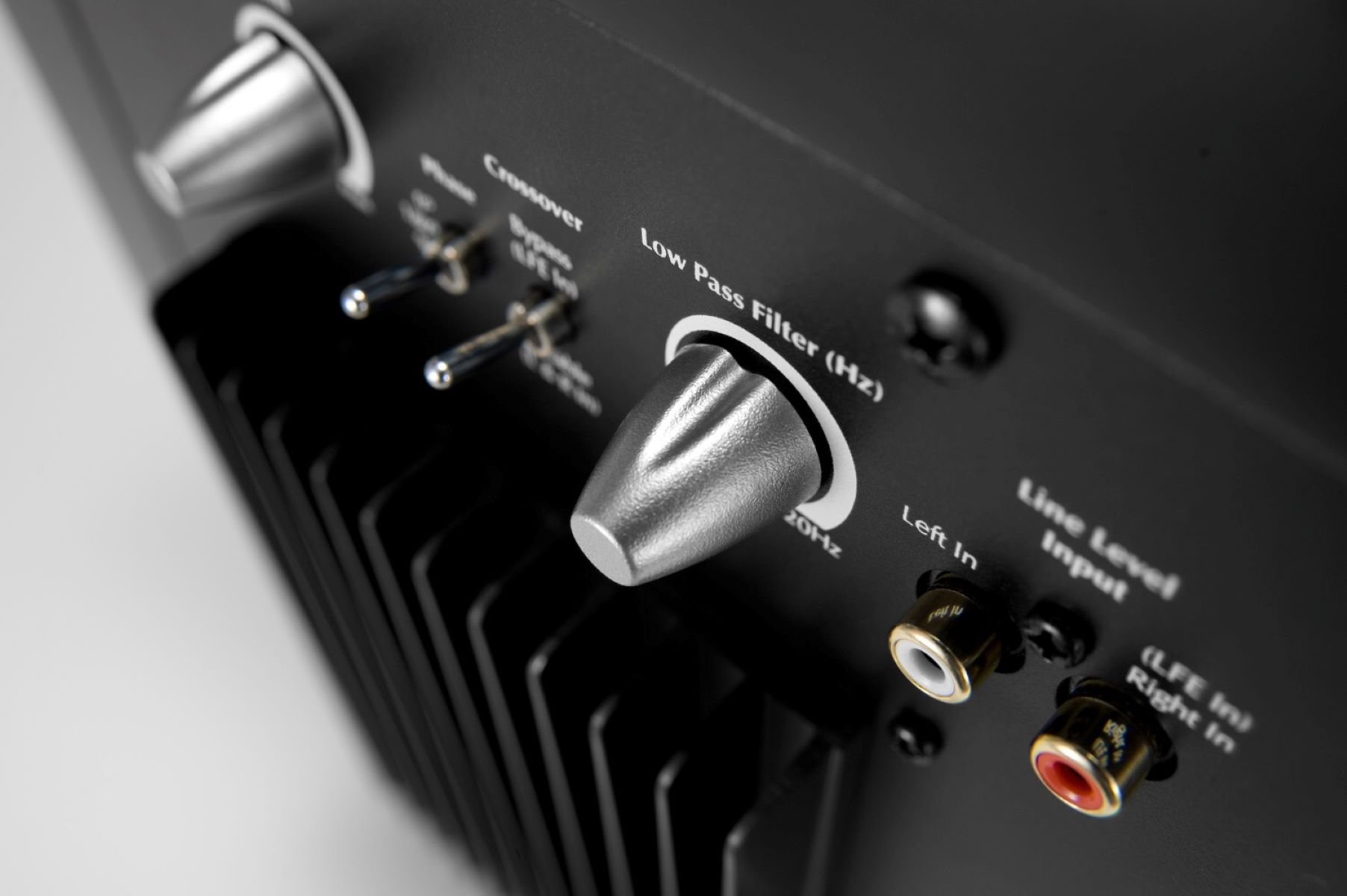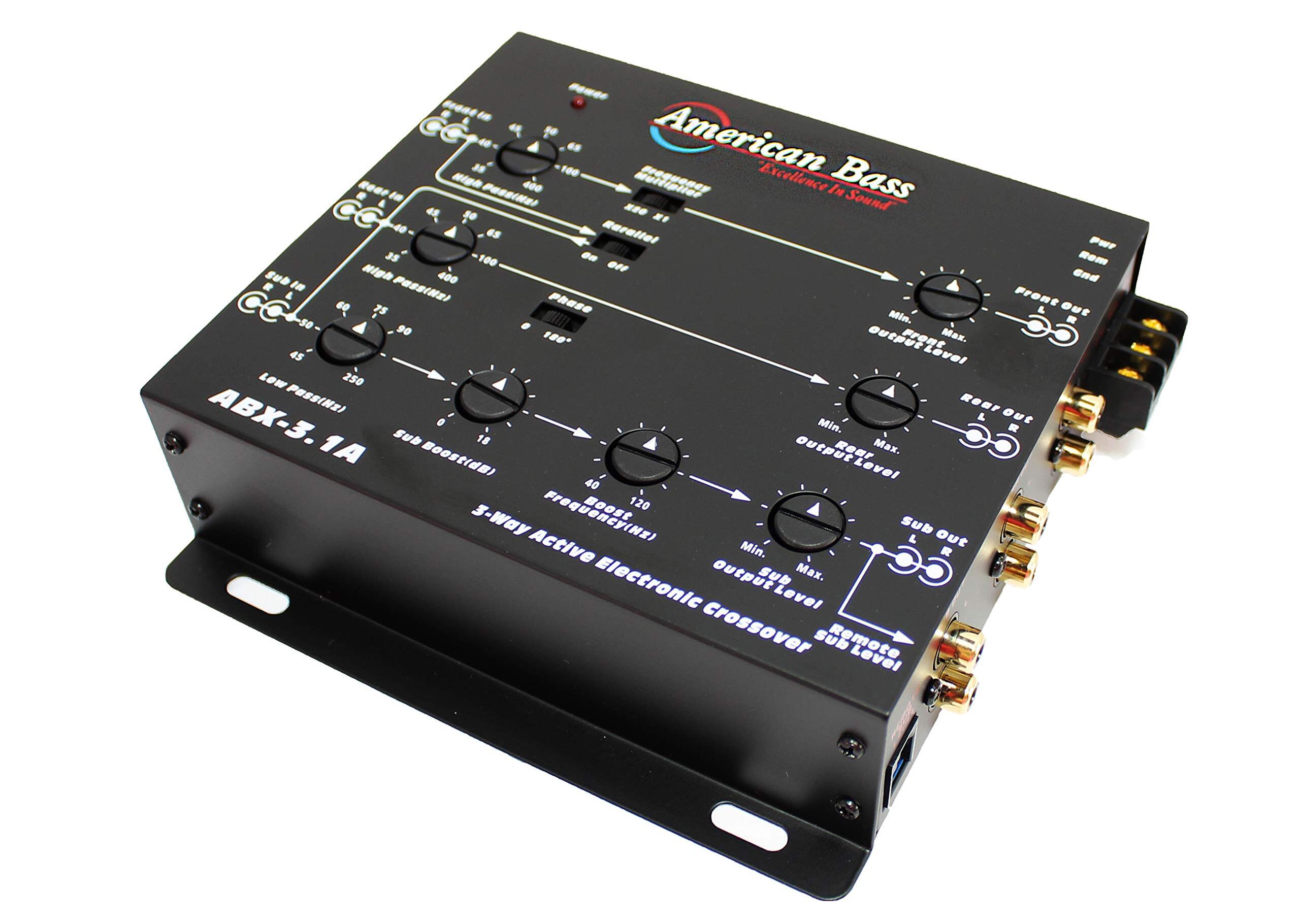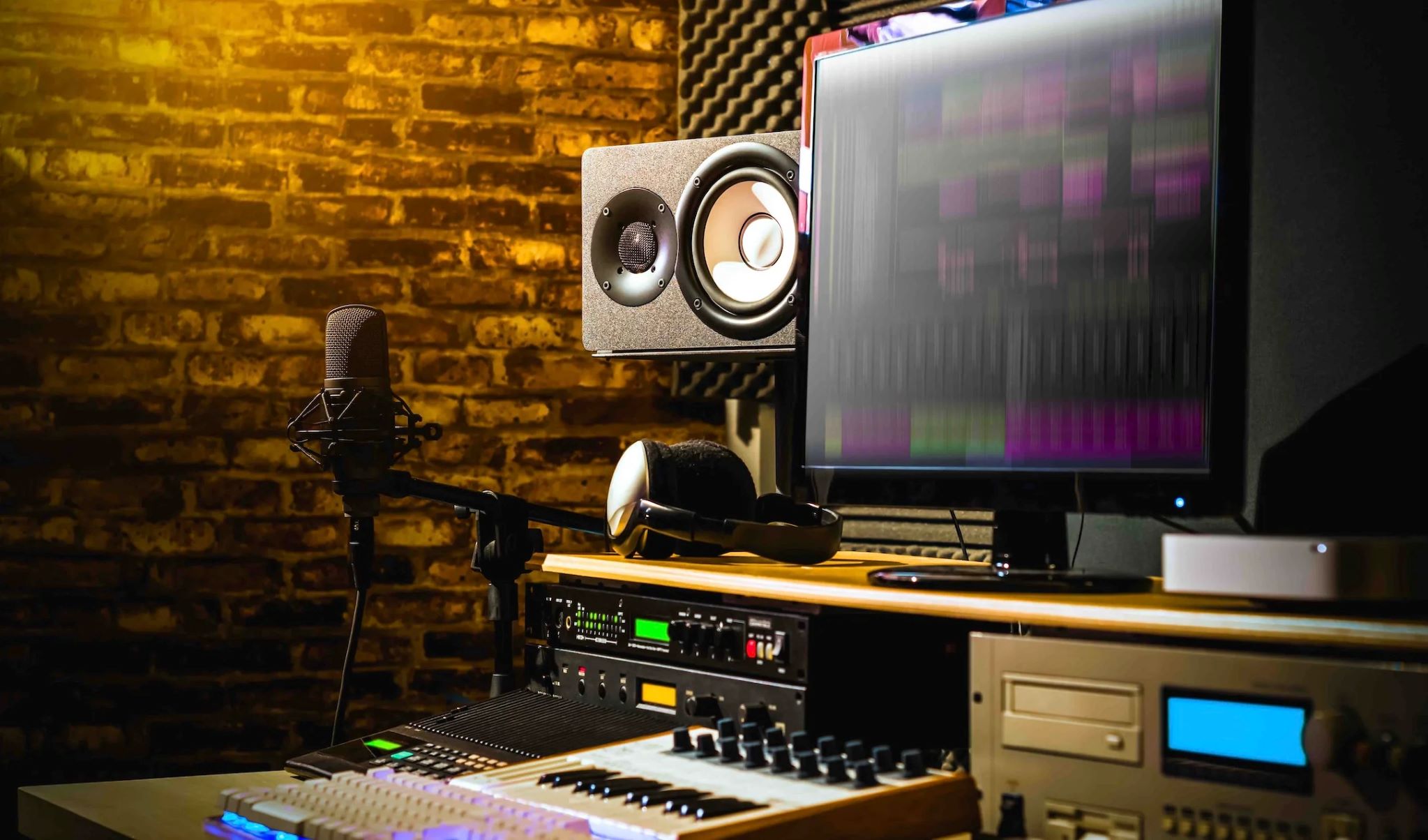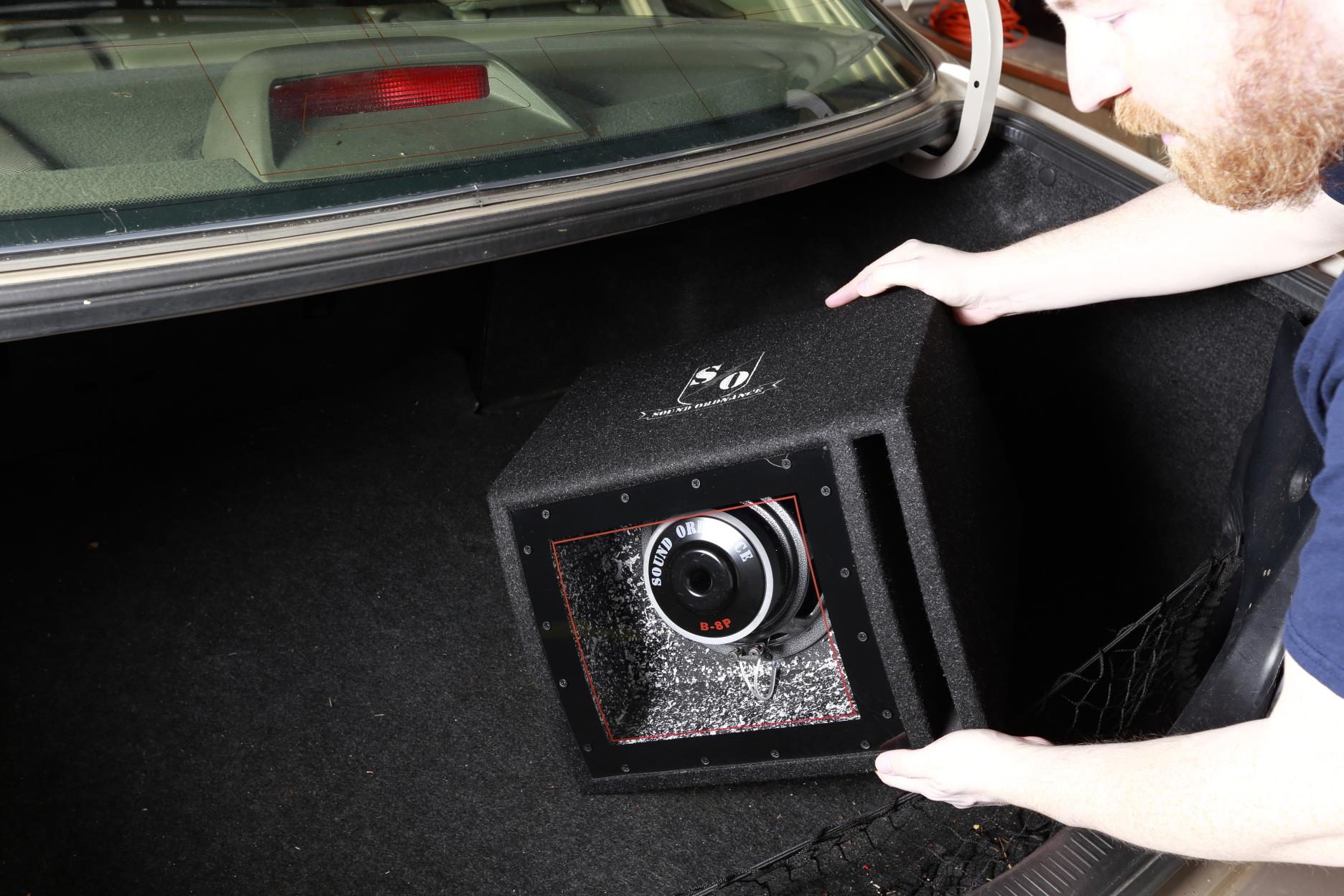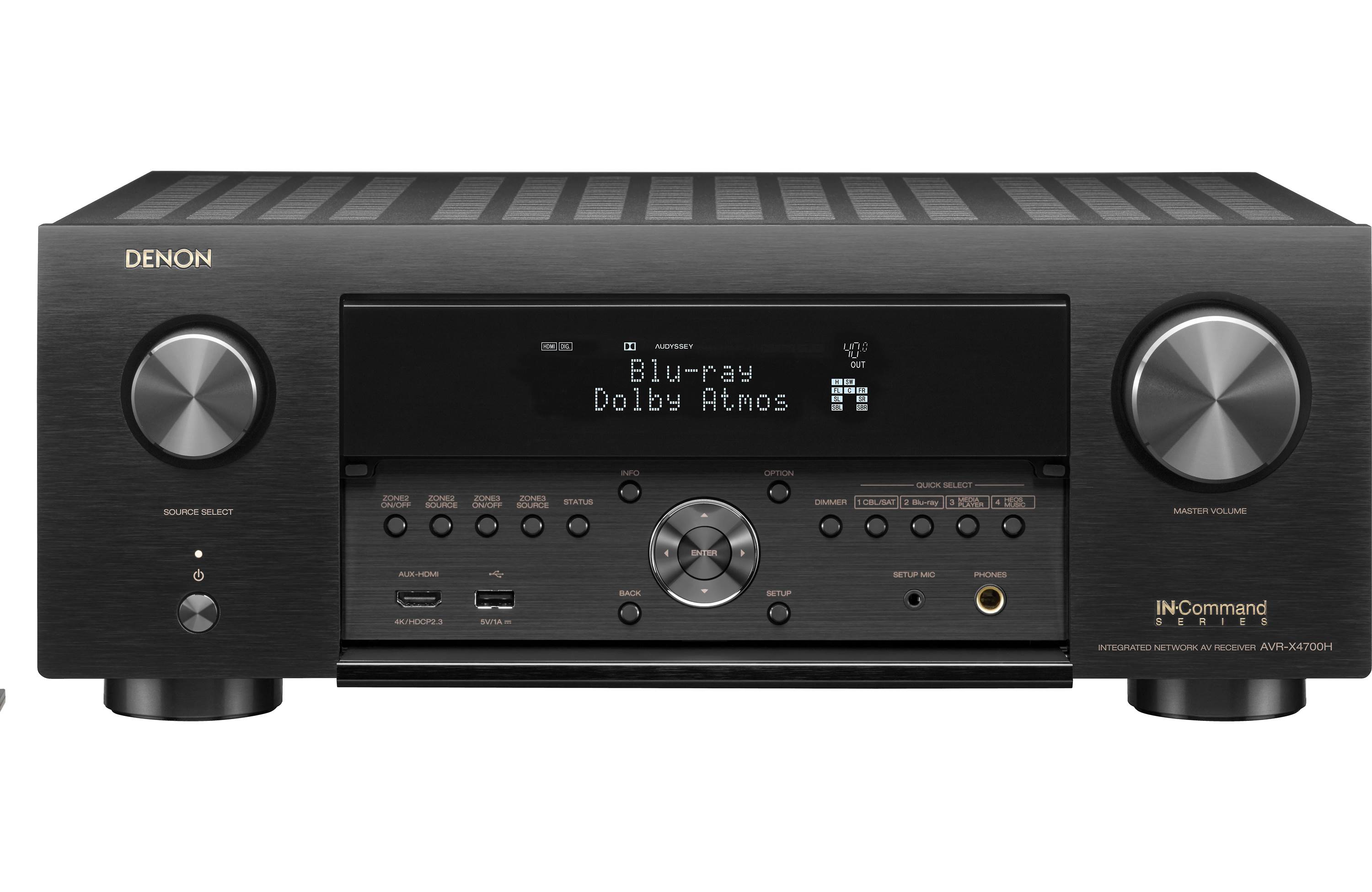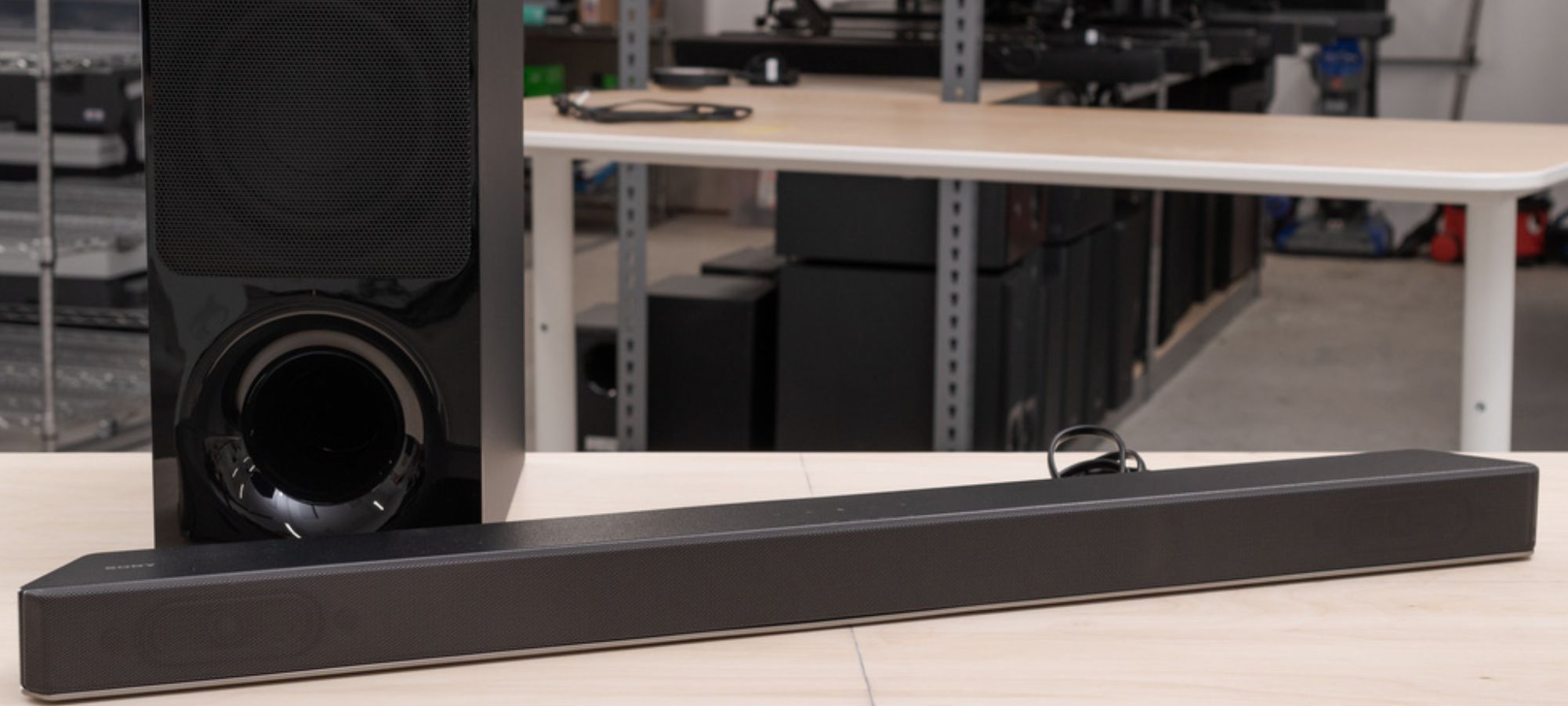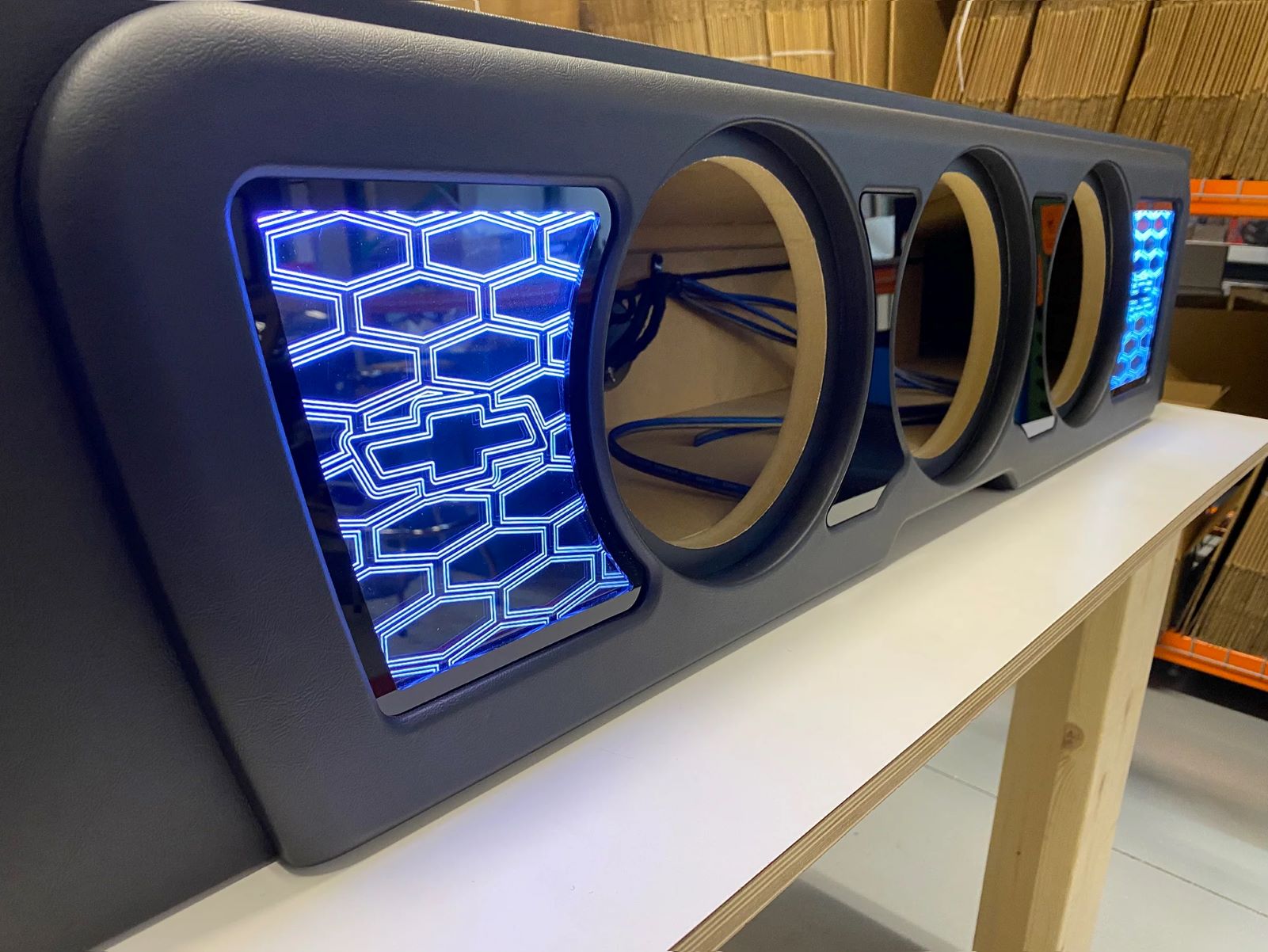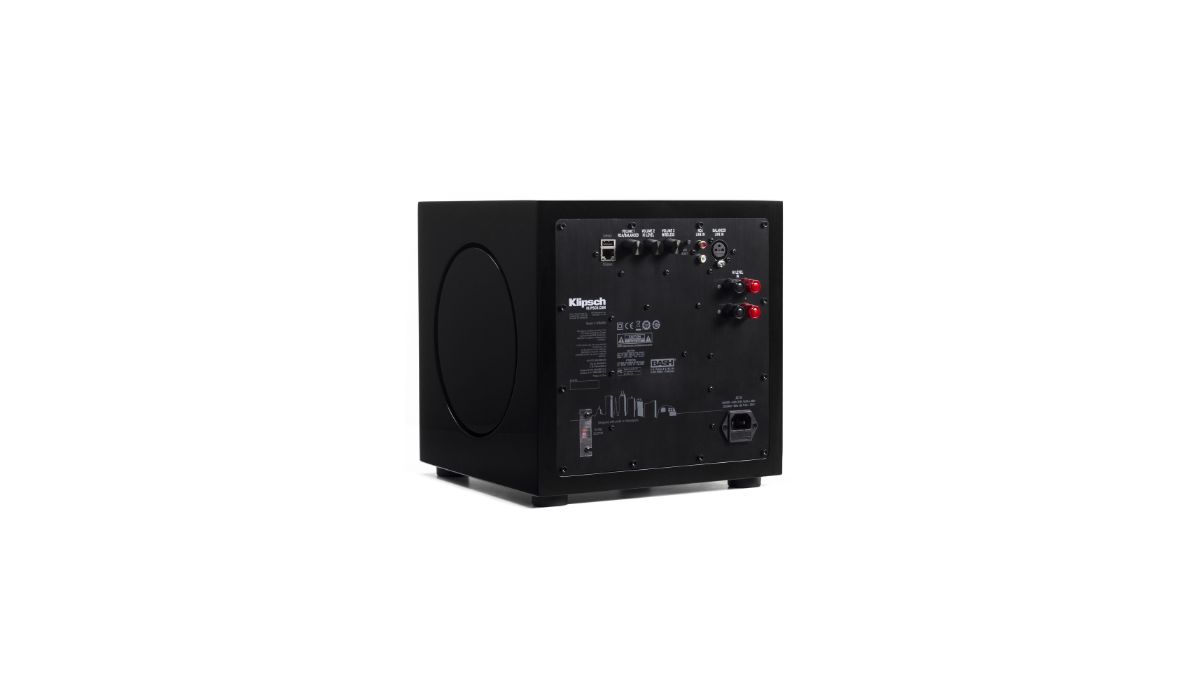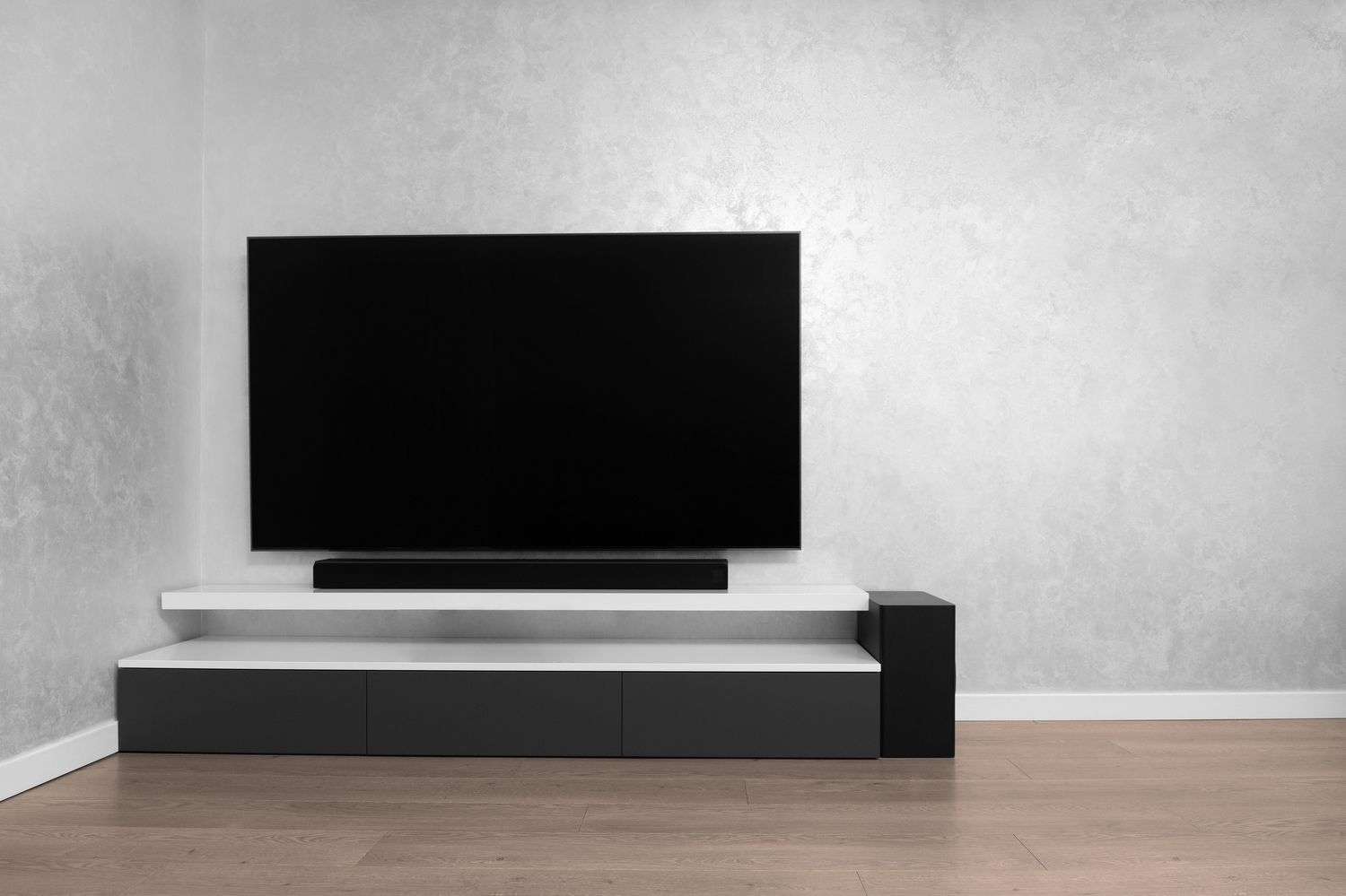Home>Devices & Equipment>Subwoofer>Where To Set Crossover On Subwoofer
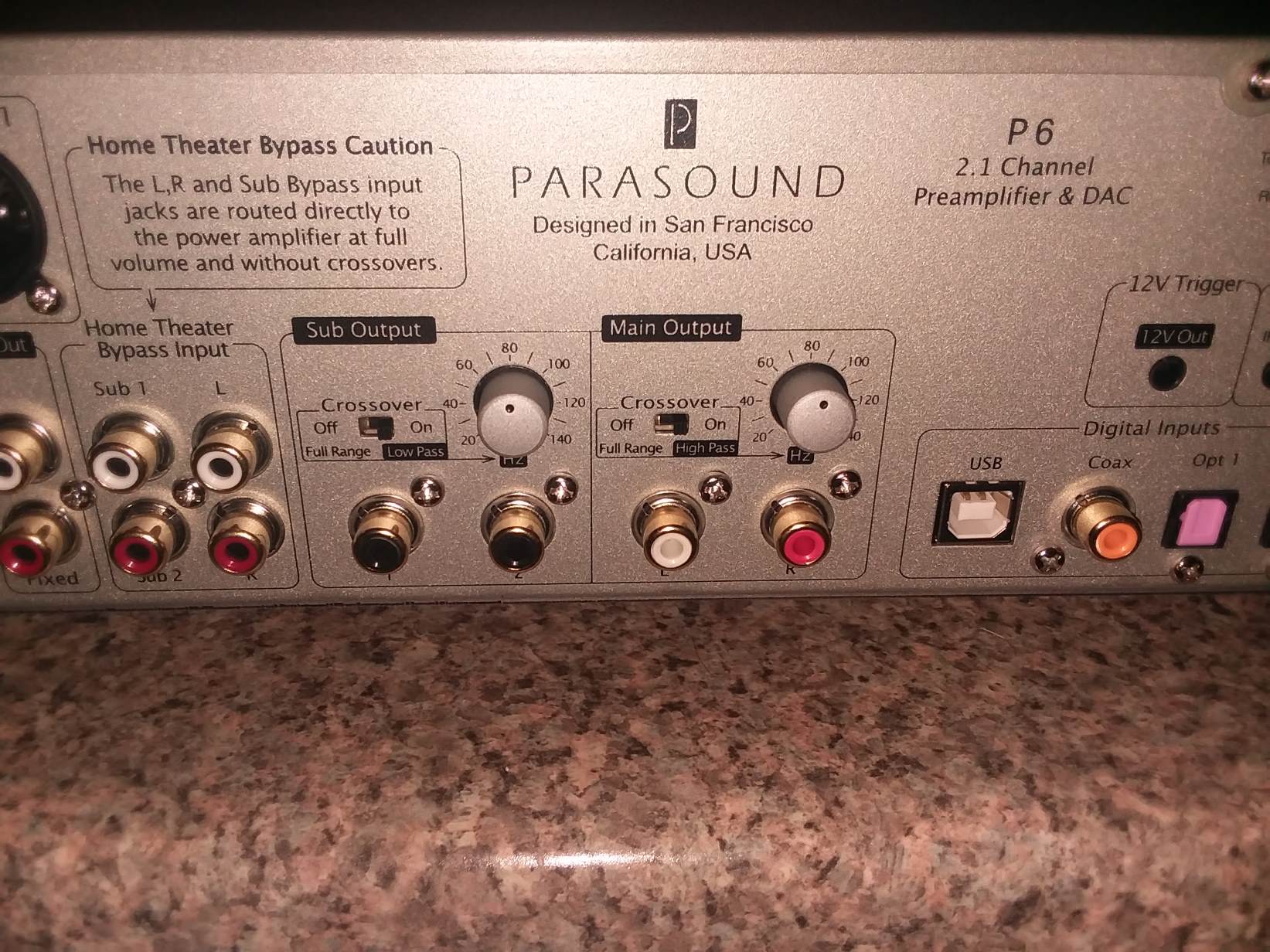

Subwoofer
Where To Set Crossover On Subwoofer
Modified: January 22, 2024
Discover the optimal crossover setting for your subwoofer and enhance your audio experience. Get expert advice on where to set the crossover for optimal bass performance.
(Many of the links in this article redirect to a specific reviewed product. Your purchase of these products through affiliate links helps to generate commission for AudioLover.com, at no extra cost. Learn more)
Table of Contents
- Introduction
- What is a Subwoofer Crossover?
- Importance of Setting the Crossover on a Subwoofer
- How Does a Subwoofer Crossover Work?
- Factors to Consider When Setting the Crossover on a Subwoofer
- Step-by-Step Guide to Setting the Crossover on a Subwoofer
- Tips and Tricks for Setting the Crossover on a Subwoofer
- Common Mistakes to Avoid When Setting the Crossover
- Conclusion
Introduction
Welcome to the world of subwoofers! If you’re a fan of deep, rumbling bass and earth-shaking audio experiences, then you’re in the right place. Subwoofers are a vital component of any audio system, designed to reproduce the low-frequency sounds that give music, movies, and games that extra punch.
But what exactly is a subwoofer crossover, and why is it important? In simple terms, a subwoofer crossover is a feature that allows you to determine which frequencies are sent to the subwoofer and which are sent to the main speakers. This crucial setting ensures that each speaker reproduces the frequencies it is best suited for, resulting in a well-balanced and more immersive audio experience.
Setting the crossover on a subwoofer correctly can make a significant difference in the overall sound quality of your system. It allows you to control the blend between the main speakers and the subwoofer, avoiding muddiness or overpowering bass that can detract from the overall listening experience. By finding the right balance, you can optimize the performance of your subwoofer and ensure that it seamlessly integrates with the rest of your audio setup.
Understanding how a subwoofer crossover works is essential before we delve into the specifics of setting it up. Simply put, a crossover is an electronic circuit that filters audio signals and separates them into different frequency ranges. It ensures that high-frequency sounds are directed to the main speakers, while low-frequency sounds are sent to the subwoofer. This division of frequencies optimizes the performance of each speaker, allowing them to reproduce sound more accurately and efficiently.
What is a Subwoofer Crossover?
A subwoofer crossover is a feature found in subwoofers and audio receivers that helps manage the distribution of frequencies between the main speakers and the subwoofer. It acts as a filter to ensure that the right frequencies are sent to each speaker, optimizing their performance and creating a balanced sound system.
In basic terms, a crossover is an electronic circuit that divides the audio signal into different frequency ranges. It separates the low-frequency sounds, typically below 80 Hz, that are best reproduced by the subwoofer, from the higher frequency sounds that are better suited for the main speakers.
Without a subwoofer crossover, the main speakers would have to handle all the frequencies, including the low-end bass that they may not be able to reproduce accurately or efficiently. This can result in distortion, loss of detail, and a less smooth and controlled bass response.
With a subwoofer crossover, you have the ability to set a specific frequency at which the subwoofer begins to handle the bass sounds. Frequencies below this cutoff point are directed to the subwoofer, while frequencies above it are sent to the main speakers. This ensures that the subwoofer focuses on what it does best – reproducing deep and powerful bass – while allowing the main speakers to handle the mid-range and high-frequency sounds with clarity and precision.
It’s worth noting that there are different types of crossovers: active crossovers and passive crossovers. Active crossovers are built into the subwoofer or audio receiver and require separate power sources. They tend to offer more customization options and precise control over the crossover settings. Passive crossovers, on the other hand, come pre-built into some speakers and do not require external power. They have fixed crossover points and are not typically adjustable.
Now that you understand the basic concept of a subwoofer crossover, let’s explore why setting it correctly is crucial for achieving the best possible audio performance.
Importance of Setting the Crossover on a Subwoofer
Setting the crossover on a subwoofer correctly is essential for several reasons. It allows you to achieve a seamless and well-integrated audio system where each speaker is optimized to reproduce its intended frequency range. Here are a few key reasons why setting the crossover on a subwoofer is important:
- Enhanced Sound Quality: By directing the appropriate frequencies to the subwoofer and the main speakers, you can ensure that each speaker is operating within its optimal range. This results in a more balanced and accurate sound reproduction, enhancing the overall sound quality of your audio system.
- Improved Bass Response: Subwoofers excel at reproducing low-frequency sounds, including deep bass notes and rumbling effects. By setting the crossover correctly, you can allow the subwoofer to handle these frequencies, ensuring that the bass is tight, impactful, and well-defined. This leads to a more immersive audio experience, whether you’re listening to music or watching movies.
- Avoidance of Muddiness: If the main speakers try to reproduce frequencies that are better suited for the subwoofer, it can result in a muddy and distorted sound. Setting the crossover helps prevent this issue by redirecting the bass frequencies to the subwoofer, allowing the main speakers to focus on mid-range and high-frequency sounds. This separation ensures clarity and articulation in the audio reproduction.
- Proper Integration with the Main Speakers: Setting the crossover correctly ensures a smooth transition between the subwoofer and the main speakers. It allows for seamless blending and integration of the bass frequencies, creating a cohesive audio output. When properly integrated, the subwoofer enhances the overall sound without overpowering or overshadowing the main speakers.
- Protection of Speakers: By setting the crossover, you can avoid overdriving the main speakers with low-frequency sounds that they are not designed to handle. This prevents potential damage to the speakers and prolongs their lifespan, ensuring long-term durability and performance.
As you can see, correctly setting the crossover on a subwoofer is crucial for optimizing sound quality, achieving a balanced audio system, and protecting your speakers. It allows each component to perform at its best and ensures that you can enjoy immersive, accurate, and impactful bass in your favorite music, movies, and games.
How Does a Subwoofer Crossover Work?
A subwoofer crossover is essentially a filter that separates the frequencies sent to the subwoofer from those directed to the main speakers. It works by setting a specific frequency, known as the crossover frequency or cutoff point, at which the division occurs.
When an audio signal is sent to the subwoofer, the crossover circuit analyzes the frequencies and determines which ones should be sent to the subwoofer and which should be directed to the main speakers. Frequencies below the crossover point are typically lower in pitch and are best reproduced by the subwoofer, while frequencies above the crossover point are higher in pitch and are better suited for the main speakers.
There are usually two types of crossover slopes or filter characteristics that can be selected: a low-pass filter for the subwoofer and a high-pass filter for the main speakers.
A low-pass filter allows frequencies below the crossover point to pass through to the subwoofer and attenuates or reduces frequencies above the cutoff frequency. This ensures that the subwoofer reproduces the deep bass sounds accurately, while preventing it from attempting to produce higher frequency sounds it cannot handle effectively.
On the other hand, a high-pass filter allows frequencies above the crossover point to pass through to the main speakers, while attenuating frequencies below the cutoff frequency. This ensures that the main speakers handle the mid-range and high-frequency sounds with clarity and detail, avoiding distortion or muddiness caused by trying to reproduce low-frequency sounds.
The slope or steepness of the crossover filter determines how quickly the frequencies beyond the crossover point are attenuated. Common slope options include 6 dB/octave, 12 dB/octave, 24 dB/octave, and 48 dB/octave. The higher the slope, the more aggressively the frequencies are attenuated, resulting in a sharper cutoff and better separation between the subwoofer and the main speakers.
By adjusting the crossover frequency and slope, you can fine-tune the crossover point and tailor the performance of your subwoofer and main speakers to your specific preferences and room acoustics. It’s important to note that the optimal crossover settings may vary depending on factors such as the size and capabilities of your speakers, the room dimensions, and personal listening preferences.
Now that you understand how a subwoofer crossover works, let’s explore some factors to consider when setting the crossover on your subwoofer to achieve the best possible audio performance.
Factors to Consider When Setting the Crossover on a Subwoofer
When it comes to setting the crossover on your subwoofer, there are several factors to consider that can greatly impact the overall sound quality and performance of your audio system. Taking these factors into account will help you achieve the best possible results. Here are some key considerations:
- Speaker Specifications: The specifications of your subwoofer and main speakers play a significant role in determining the appropriate crossover settings. Take into account factors such as the frequency response range, power handling capabilities, and size of the speakers. Refer to the manufacturer’s recommendations for the ideal crossover points, as they provide valuable guidance tailored to your specific speakers.
- Listening Environment: The size and characteristics of your listening room or space can affect how the audio frequencies are dispersed and perceived. Larger rooms may benefit from a lower crossover setting to distribute more bass energy, while smaller rooms may require a higher crossover setting to prevent the bass from overpowering the sound. Experiment with different crossover frequencies and listen for what sounds best in your specific environment.
- Mix of Audio Content: Consider the type of audio content you primarily listen to. If you’re a music enthusiast, you may prefer a tighter and more accurate bass response, requiring a higher crossover frequency. If you’re an avid movie watcher, a slightly lower crossover frequency may enhance the impact of explosions and deep rumbling sounds. Tailor your crossover settings to suit your preferred audio content.
- Personal Preference: Ultimately, your personal preference plays a significant role in determining the right crossover settings for your subwoofer. Listen attentively and experiment with different crossover frequencies to find the balance that appeals to your ears. Adjust the crossover point and slope to achieve the desired bass response and integration with the main speakers. Trust your ears and make subtle adjustments until you achieve the sound that satisfies your musical taste.
- Room Acoustics: The acoustic characteristics of your room, such as its dimensions, materials, and furniture arrangement, can impact the way sound is reflected, absorbed, and dispersed. Different rooms can have varying resonances and standing waves that affect bass reproduction. Consider using room treatments, such as bass traps or acoustic panels, to mitigate any unwanted room resonances and improve bass response. Experiment with different crossover settings to find the optimal balance that works well in your specific room environment.
Keep in mind that finding the ideal crossover settings may require some trial and error. It’s advisable to start with the manufacturer’s recommendations as a baseline and then make adjustments based on the specific factors discussed above. Take your time, listen carefully, and fine-tune the crossover settings until you achieve the best sound quality and integration between the subwoofer and main speakers.
Now that you have a good understanding of the factors to consider, let’s walk through a step-by-step guide to help you in setting the crossover on your subwoofer.
Step-by-Step Guide to Setting the Crossover on a Subwoofer
Setting the crossover on your subwoofer may seem daunting at first, but with a step-by-step approach, you can easily achieve optimal results. Here is a guide to help you through the process:
- Read the Manual: Start by referring to the user manual or documentation provided by the manufacturer of your subwoofer. It will provide valuable information about the specific crossover features, controls, and recommendations for your particular model.
- Locate the Crossover Control: Identify the crossover control on your subwoofer or audio receiver. It is typically labeled as “crossover frequency” or “crossover knob.” This control allows you to adjust the frequency at which the subwoofer starts handling the bass sounds.
- Set the initial frequency: Begin by setting the crossover frequency to a suggested starting point, often around 80 Hz. This is a common crossover frequency that works well with most speakers and provides a good starting point for calibration.
- Play Audio Test Tracks: Choose audio tracks that cover a wide range of frequencies, including low-end bass notes. These tracks can be specifically designed for testing speakers or include a variety of musical genres with deep bass elements. Use these tracks to evaluate the performance and integration of the subwoofer and main speakers while making adjustments to the crossover settings.
- Listen and Adjust: Pay close attention to the bass response as you listen to the audio test tracks. If you feel that the bass is weak or lacking impact, gradually increase the crossover frequency. Conversely, if the bass sounds overpowering or boomy, decrease the crossover frequency.
- Find the Sweet Spot: Continuously listen to different audio content, including music and movies, to ensure that the crossover setting delivers the desired balance and integration between the subwoofer and main speakers. Fine-tune the crossover frequency until you find the sweet spot that satisfies your personal preference and provides a well-balanced sound experience.
- Confirm with Measurements: If available, use audio measurement tools such as a sound level meter or room correction software to verify the performance of your subwoofer and main speakers. Measure the frequency response and ensure a smooth transition between the subwoofer and main speakers at the crossover point.
Remember, setting the crossover is a subjective process, and what sounds good to one person may differ from another. Trust your ears and make adjustments based on your personal listening preferences and the specific characteristics of your audio system.
By following this step-by-step guide, you can efficiently set the crossover on your subwoofer and achieve optimal sound quality, seamless integration, and a satisfying bass experience.
Now that you have a solid understanding of how to set the crossover on your subwoofer, let’s explore some useful tips and tricks to enhance the performance and avoid common mistakes.
Tips and Tricks for Setting the Crossover on a Subwoofer
When it comes to setting the crossover on your subwoofer, there are some helpful tips and tricks that can further enhance your audio experience and ensure optimal performance. Consider the following suggestions:
- Experiment with Crossover Frequencies: Don’t be afraid to try different crossover frequencies to find the best balance for your audio system. Start with the recommended starting point of around 80 Hz and then make gradual adjustments, listening carefully to the changes in bass response.
- Consider Room Acoustics: Room acoustics can greatly impact the performance of your subwoofer. If you notice boomy or uneven bass, try repositioning the subwoofer, experimenting with different room placements, or adding acoustic treatments to mitigate any room resonances that may affect the bass response.
- Use Test Tones: Test tones can be helpful in setting the crossover on your subwoofer. These are pure tones generated at specific frequencies. Play the test tones and adjust the crossover frequency to achieve a smooth transition and even response between the subwoofer and main speakers.
- Consider a Subwoofer Phase Adjustment: Some subwoofers offer a phase adjustment control. Experimenting with the phase setting can help optimize the integration of the subwoofer with the main speakers. Try different phase settings while listening to music or movies and choose the one that provides the best overall bass response.
- Use Room Correction Software: If your audio system supports it, consider using room correction software to help analyze and optimize the performance of your subwoofer and main speakers. These software solutions can automatically adjust the crossover settings and equalization to compensate for room characteristics and deliver more accurate and balanced sound.
- Listen at Different Listening Positions: Walk around the room and listen to the audio from multiple positions. This will give you a better understanding of how the bass response varies in different areas of the room. Make adjustments to the crossover frequency to achieve a more uniform and balanced bass output throughout the room.
- Use Reference Material: Reference tracks that you are familiar with can be invaluable in setting the crossover. Listen to these tracks across different genres and pay attention to the bass response. This will help you fine-tune the crossover settings to ensure that your favorite music sounds rich, detailed, and balanced.
By utilizing these tips and tricks, you can further refine the crossover settings of your subwoofer and achieve the best possible bass performance and integration with your main speakers. Remember to experiment, trust your ears, and make subtle adjustments until you find the optimal balance that suits your listening preferences and room acoustics.
Now that you are armed with these helpful tips, let’s discuss some common mistakes to avoid when setting the crossover on your subwoofer.
Common Mistakes to Avoid When Setting the Crossover
While setting the crossover on your subwoofer can greatly enhance your audio experience, there are a few common mistakes that you should avoid to ensure optimal performance. By avoiding these pitfalls, you can achieve a well-integrated and balanced sound system. Here are some common mistakes to steer clear of:
- Setting the Crossover Too High: One common mistake is setting the crossover frequency too high. This can result in a lack of bass impact and clarity, as the subwoofer may not be handling the lower frequencies where it excels. Start with a lower crossover frequency and gradually increase it until you find the ideal balance.
- Setting the Crossover Too Low: On the other hand, setting the crossover frequency too low can lead to an overpowering and muddy bass response. This can negatively impact the overall sound quality and make it difficult for the main speakers to handle the mid-range and high-frequency sounds. Avoid excessively low crossover settings for a more balanced audio output.
- Not Considering Speaker Size and Capability: Every speaker has its own limitations and sweet spots when it comes to handling frequencies. Ignoring the specifications and capabilities of your speakers can result in an unbalanced sound system. Take into account the recommended frequency ranges and power handling capabilities of your speakers when setting the crossover.
- Ignoring Room Acoustics: Your room’s acoustics can significantly impact your audio system’s performance, especially the bass response. Failing to consider room resonances, reflections, and standing waves can lead to uneven and distorted bass. Take the time to address room acoustics through proper speaker placement and acoustic treatments for optimal results.
- Not Listening from Different Positions: It’s crucial to listen to your audio system from different positions within the room. Standing in one spot may not provide an accurate representation of how the bass is distributed throughout the listening area. Move around and make adjustments to the crossover based on how the bass sounds from multiple listening positions.
- Overdriving the Subwoofer: Pushing the subwoofer to its limits can result in distortion and damage to the speaker. Be mindful of the volume levels and avoid excessively boosting the subwoofer’s output. It’s better to have a well-balanced and controlled bass response than to overpower the system.
By avoiding these common mistakes, you can set the crossover on your subwoofer with more precision and achieve optimal sound quality, seamless integration, and an immersive audio experience.
Now that you are aware of these common mistakes, let’s conclude our discussion on setting the crossover on a subwoofer.
Conclusion
Setting the crossover on a subwoofer is a crucial step in achieving optimal sound quality and integration within your audio system. By understanding the purpose of a subwoofer crossover and considering factors such as speaker specifications, room acoustics, and personal preference, you can fine-tune the crossover settings to achieve a well-balanced and immersive audio experience.
A properly set crossover ensures that each speaker in your system reproduces the frequencies it’s best suited for, preventing distortion, muddiness, and overpowering bass. It enhances sound quality, improves bass response, and creates a seamless blend between the subwoofer and main speakers.
When setting the crossover, it’s important to experiment, trust your ears, and make subtle adjustments based on your listening experiences. Use test tones, reference tracks, and room correction software to aid in the calibration process. Avoid common mistakes such as setting the crossover too high or too low, neglecting room acoustics, and overdriving the subwoofer.
By following the step-by-step guide, considering the factors that influence crossover settings, and implementing helpful tips and tricks, you can achieve the optimal crossover configuration tailored to your preferences and room acoustics. The result will be a well-integrated audio system that delivers accurate, balanced, and immersive bass performance.
Take the time to explore and experiment with different crossover settings, as it can make a significant difference in the overall enjoyment of your music, movies, and games. Remember to listen critically, trust your ears, and make adjustments that bring out the best in your subwoofer and main speakers.
Now, armed with a deeper understanding of subwoofer crossovers and the knowledge of how to set them correctly, you can embark on your journey to optimize your audio system and experience the full potential of deep, rumbling bass.


